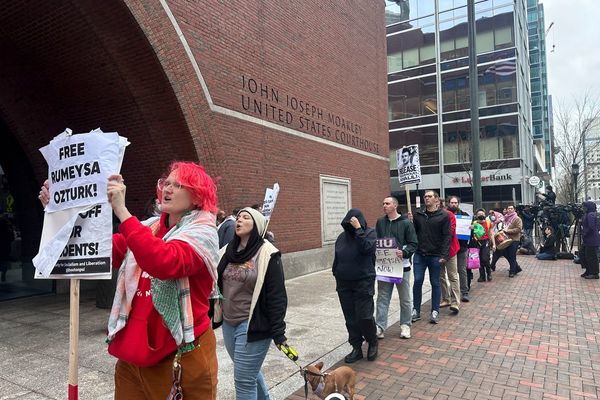In his recent article in The Atlantic, Ed Yong posed a poignant question: “What does society owe immunocompromised people?”
During the massive surge in COVID cases in the fall and winter of 2020, I remember seeing commercial after commercial proclaiming that we were all in this together. Images of nurses and doctors with haggard faces and weeks’ old personal protection equipment flashed on screen. In November 2020, Dr. Anthony Fauci, as part of the White House COVID task force, stated, “We can mitigate this virus and stop this spread together.”
Most people understood that protecting one another with layered protection strategies like masking and social distancing was essential to doing your part to help the broader community.
But much has changed in the last two years. The release of vaccines to combat COVID provided an extra layer of protection for most individuals. Mask mandates, or even mask recommendations, have been thrown out the window in many places, including on public and air transportation. Recent videos of airline passengers cheering and throwing away their masks were virally making their way across social media platforms after a federal judge in Florida struck down the Biden administration’s airline mask mandate.
However, most highly trained, well-regarded public health policy analysts state that masking is still needed to help reduce surges and hospitalizations and protect the most vulnerable in our communities. Even Dr. Fauci stated in 2020, “We should not say that vaccines are a substitution for public health measures; (they’re) a complement to public health measures.”
COVID-19 is a respiratory illness spread through aerosol transmission. While it has affected everyone in the United States in some way, it has disproportionately harmed individuals who are immunocompromised, seniors, people with certain comorbidities, and Black or brown communities. Layered mitigation strategies, including wearing a mask, have shown to significantly decrease the risk of transmission. Even surgical masks and cloth masks can reduce transmission rates. Yet the director of the Centers for Disease Control and Prevention, Dr. Rochelle Walensky, called masks “the scarlet letter of this pandemic.”
The shift from community-based public health measures to individual-risk health evaluations has left those who have been most affected by the pandemic increasingly vulnerable. As certain public health experts, including the CDC, push personal risk assessment over holistic community public health policies, individuals at high risk for COVID complications are left to determine how to navigate the daily task of going to the grocery store and attending health appointments.
Also, the personal risk assessment doesn’t take into account the disabling nature of COVID-19: According to the Government Accountability Office, 10% to 30% of COVID survivors experience symptoms for more than one month, and at least 10% have symptoms that have affected their ability to work. A new study also showed that of the 66,008 COVID survivors experienced, on average, brain damage comparable to 20 years of aging.
So, what do we owe those most at risk for COVID complications? What do we owe the nurses and doctors burnt out after multiple surges? The United States must make crystal clear the value of masks in protecting vulnerable people and communities to help reduce surges and protect the most at risk in our communities. Masks are not scarlet letters — they are one of the many tools at our disposal to reduce chances of death or disability from long COVID.
As Dr. Paul Farmer is often quoted, “The idea that some lives matter less is the root of all that is wrong with the world.” It’s our moral and civic duty to serve and protect the most vulnerable in our communities. By doing this, we protect all in our communities.







